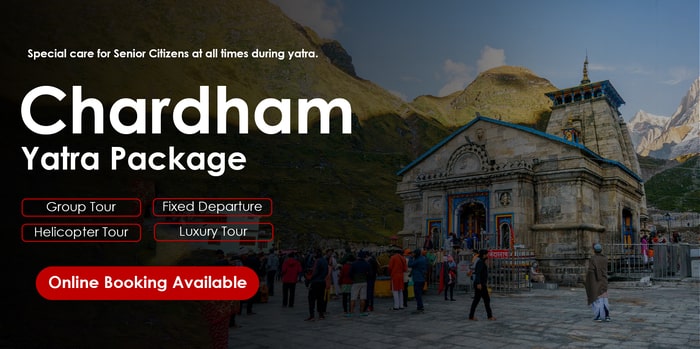Last Updated on January 15, 2025
The rivers of Ganga, Yamuna, Saraswati, Kaveri, Godavari, Krishna, Sindhu, Shipra, and Brahmaputra all have their own confluences. The Hindu religion reveres three main gods—Brahma, Vishnu, and Shiva—and three main goddesses—Lakshmi, Saraswati, and Parvati. This is why the Triveni, where three rivers meet, holds incredible importance everywhere in India. Triveni refers to the place where the three rivers meet, forming a confluence. In the same way, the holy river Ganga, which flows through Prayag, also has a place where three rivers meet.

The Sangam, also known as Triveni, is the location where the confluence of the Ganga, Yamuna, and Saraswati rivers takes place. This rare Sangam is famous all over the world. After Ganga and Yamuna, the Saraswati river has also garnered great importance in Indian culture and religion. But the big question is: While the merging of the Ganga and Yamuna rivers is clearly visible due to the contrast in color, where does the third mysterious river, Saraswati, merge, and how did this happen?
There is an explanation for this mysterious convergence, which is depicted in great detail in the Shrimad Bhagwat Puran. In the past, the Saraswati river used to flow through the current Saurashtra region. In ancient times, this Saurashtra region also included the entire Marwar area. Saraswati peacefully made her way through here, and every day, people would perform puja rituals. Gradually, as the residents of this place began accepting the beliefs and culture of the ‘Yavan’ people, the holy river Saraswati asked Brahmaji for permission to leave the Marwar and Saurashtra regions and make her home in Prayag. After the Saraswati river left these regions, the entire area became a desert, which is now known as present-day Rajasthan.
The Rigveda describes the Saraswati river as Annavati and Udakvati, meaning a source of nourishment and provider of food. It also mentions that the river flows to the east of Yamuna and to the west of Sutlej. In the epic Mahabharata, Saraswati is referred to as Plakshvati, Vedsmriti, and Vedvati. In other sources, like the Tandaya and Jaiminiya Brahmana, the Saraswati river is described as having turned into a dry desert.
The epic Mahabharata mentions a place called “Vinashan,” which is the exact spot where the Saraswati river disappeared completely from the surface. Brahmavarta and Kurukshetra were located on the banks of this river, but today, there exists a reservoir in its place. The Mahabharata also mentions that Balram traveled from Dwarka to Mathura via the Saraswati river. It has also been mentioned that after the battle, the mortal remains of the Yadavas were immersed in its water, suggesting that this river existed during this time and was also used for travel.
How Did Saraswati Converge into Ganga?
Vedic texts also describe the existence of another river called the ‘Drishdwati.’ This river acted as an assisting river to the Saraswati and passed through Haryana. At the same time, a massive earthquake rocked the entire land of Haryana and Rajasthan. These destructions caused the underlying mountains to rise above the ground, which in turn changed the flow of the rivers.
While the Saraswati river disappeared, the flow of the Drishdwati also changed. This same river, Drishdwati, is now known as the Yamuna. The history of this river is believed to date back as far as 4,000 years. When the earthquake caused the ground to rise, half of the water from Saraswati got transferred into the Yamuna (Drishdwati). This is how the water of Saraswati merged with Yamuna. This is why Prayag is known as the confluence point of three rivers.
Religious Reference
The Mahabharata mentions seven rivers named Saraswati. A Saraswati river, flowing alongside Yamuna, used to merge with the Ganga. According to observations mentioned in Brajmandal, the Saraswati river used to flow from the ancient state of Haryana and make its way via Ambika Van (near Mathura). At this place, it would join the Yamuna, a spot known as the ‘Saraswati Sangam Ghat.’ The Puranas also mention the Saraswati river and Ambika Van, which are situated close to the river.
The ancient flow of the Saraswati river no longer flows regularly in this area. In its place, a monsoon stream still flows, bearing the same name, and flows through the former Ambika Van area toward the forest of Mahavidya to meet the Yamuna. Saraswati Kund also exists there. The existing Nala, Mandir, Kund, and Ghat serve as evidence of this ancient river stream. The tradition of Braj is associated with the prehistoric autumn, as mentioned in the Swayambhuva Manu (the first Manu in the series). The earlier name of Swami Ghat in Mathura was Sanyaman Ghat.




 Call
Call WhatsApp
WhatsApp Enquiry
Enquiry
Many thanks I did the Triveni sangam of Benares Kashi in 2009
sir
may i know details of rituals done at sangam and wheether it can be done inabsentia for those who cannot reached there and pl guide sir
regards
It’s engrossing to read this article pertaining to Triveni Sangam in Prayagraj. References from ancient Hindu scriptures make it completely authentic. In addition to that the religious rituals which are performed here should have been mentioned in some detail.